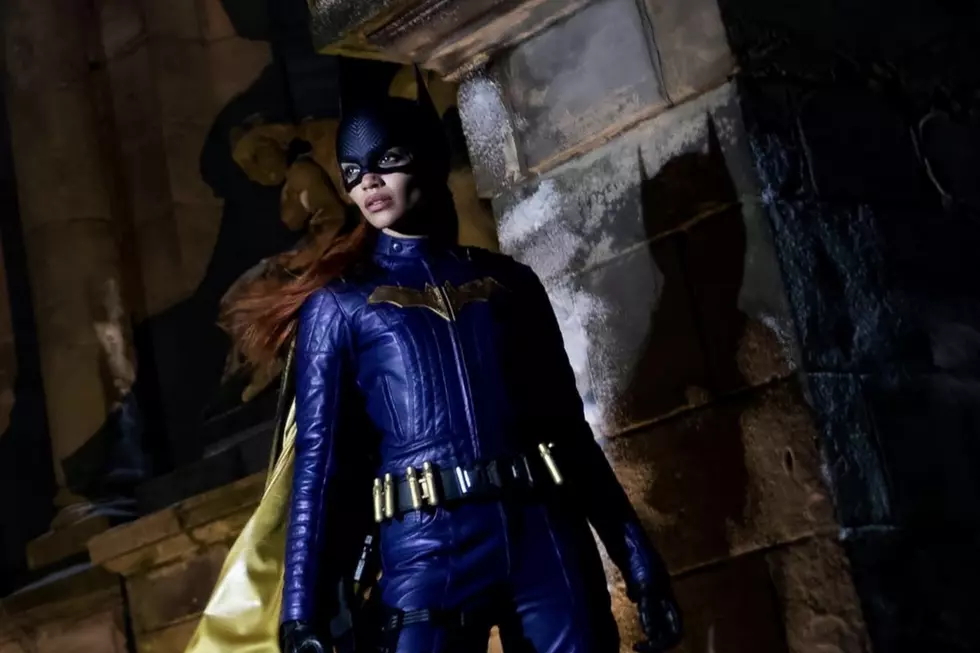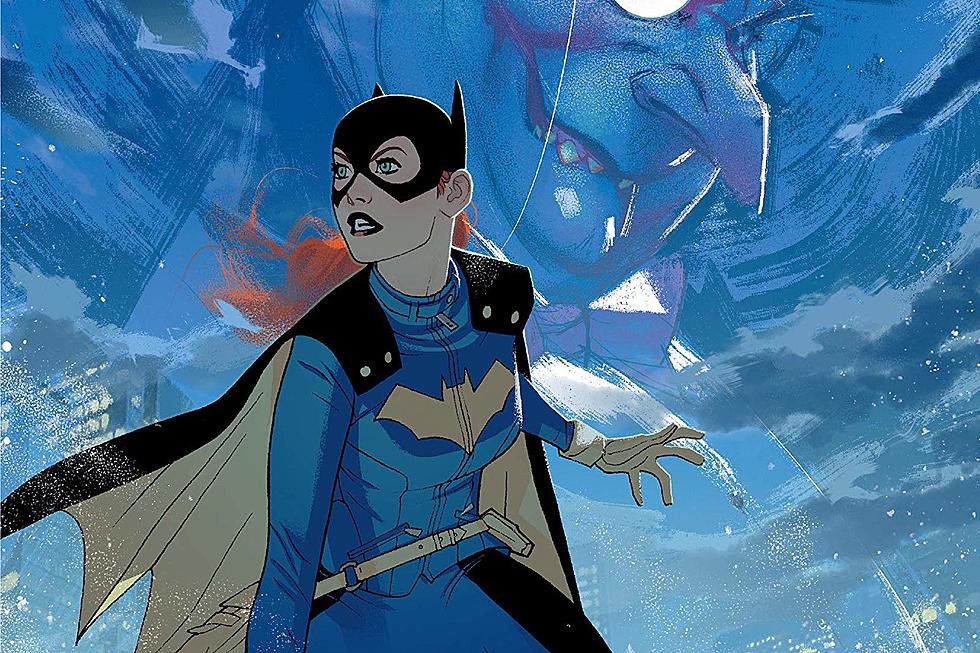
Girl Fight: The Marvel/DC Rivalry Finally Extends To Winning The Female Audience
Marvel launches the eighth of its nine solo titles with a female lead in November with Spider-Woman #1, and the book sadly already has a cloud over it. A variant cover by master erotic artist Milo Manara stirred enough controversy last week to garner mainstream attention. The cover featured Spider-Woman with her apple-shaped butt raised high in decidedly unheroic manner. It was exactly what one would expect from Manara, who has created a number of superheroine illustrations for Marvel, but the image suggested a particularly overt tone of sexual objectification that could alienate the sort of readers who attended the Women In Marvel panel at San Diego where the series was announced.
As far as I can recall, Marvel has more female solo titles now than ever before, with a ninth title, Angela: Asgard's Assassin, launching in December. On paper, that suggests a laudable effort to reach out to superhero comics' growing and under-served audience of female readers. Yet the Manara incident serves to remind us that books about women can very easily be targeted to a male audience.
There's currently an unspoken contest between Marvel and DC to see who can produce more comics aimed at a female audience. It's possible the contest only exists in my head, as I've been keeping a tally of solo titles with female leads for the past several months -- but I wouldn't be surprised to learn that editors at the two publishers have also been keeping track.
Young women are easily the single biggest growth market for comics publishers. Both at conventions and online, young women have established themselves as an engaged and passionate fan base -- and one that seems willing to positively promote the books they love via word-of-mouth in ways that male readers never have. Cosplay, crafts, fan-fiction, fan art; these are all ways of celebrating comics that seem to primarily appeal to female readers. Social sharing platforms like Tumblr and Pinterest have more female users than male, creating a culture of sharing and support.
Young women are a good audience to have, and several major publishers are making the slow adjustment towards releasing books aimed at this audience. It's in Marvel's best interests to have more books for young women than DC. It's in DC's best interests to have more books for young women than Marvel. Both publishers ought to keep count.
And because this is a growing and positive audience, it's in the best interests of comics to point all of this out and make Marvel and DC fight. It seems worth mentioning, for example, that Marvel has more titles with female leads than DC for perhaps the first time ever -- nine, going on ten (Captain Marvel, Ms. Marvel, Black Widow, Elektra, She-Hulk, Storm, Thor, Spider-Woman, the team book X-Men, and soon, Angela) -- to DC's eight (Wonder Woman, Batgirl, Batwoman, Catwoman, Harley Quinn, Supergirl, World's Finest, and Gotham Academy). Wonder Woman and the Superman and Batman families have traditionally given DC a substantial advantage in this field, but an aggressive launch schedule in 2014 has allowed Marvel to overtake their main rival.
Of course, a straightforward tally of Marvel and DC books with solo female leads doesn't paint a full picture. First of all, DC's New 52 launched with five of those six titles, plus Voodoo and the all-female Birds of Prey. DC has a stronger foundation -- but of those New 52 launch titles, it's arguable that only Batgirl seemed tailored to a female audience, and perhaps as many as half of those titles were written or drawn in ways that would actively alienate most female readers.
This is the Manara of it all. In superhero comics, a book with a female lead is traditionally much more likely to be targeted at a male audience than a female audience, because almost all superhero comics are targeted at a male audience.
Women are sexualized in comics in ways that men are not. The J. Scott Campbell cover that purportedly shows Spider-Man in the same pose as Manara's Spider-Woman is not equivalent, not only because the compositional focus of the image is dramatically different (though that is difference enough), but because there is neither sexual intention in Campbell's illustration nor a common precedent for men being sexualized this way. (No-one can plausibly claim there is no sexual intention in Manara's cover.)
The false equivalence in the popular refrain that "men are sexualized too" in superhero comics always ignores that male superheroes are male fantasies, not female fantasies. A women might find these big dudes attractive, but they're not designed for her; they're designed for him. The same "him" that the female heroes have traditionally been designed for. It's all for him. The Men's Fitness physique is a projection of male power, not female desire. When a guy says the men are sexualized too, it's a good bet that the he's never spent much time learning about what women find sexy.
A publisher could have twenty titles with female leads, and if they're all about magical strippers and their back-breaking balloon companions, that publisher doesn't have any books aimed at a majority female audience.
So what do female readers want to see? It's not my place to offer a definitive answer, and I'm naturally nervous of promoting any broad gender stereotypes, but I think I'm in safe territory if I say that women reading superhero comics want many of the same thing men want -- heroes, adventure, action -- but with women as active agents in the story, rather than solely as objects of conquest or desire, or as sources of pain for the male protagonist. In other words, women who are the equivalent of the men.
I'll go a little further and say that I think women also want to see stories by women. Women who write the stories they wish they could read. Women who create the images they wish they could see. Women writing women for women. In an industry that's seen men writing men for men for decades, it doesn't seem like rocket science to suggest that the same formula could work for women.
Broadly speaking, then, there are three things publishers can do to appeal to the growing female audience. First, stop demeaning women -- because insulting the people you're selling to is not a good look. Second, give your audience heroes they can celebrate, e.g. books with female lead heroes. Third, hire women.
What happens when you put those things together? You get Kamala Khan, the new Ms. Marvel, star of an eponymous comic that's enjoyed a very rare sixth printings of its first issue and, according to Bleeding Cool, sells more in digital than in print -- making it both emblematic of a shifting market and one of the best-selling comics out there today.
So let's look again at that tally of female solo books at Marvel and DC and see how they really rack up.
Most of Marvel's ten books have male writers and male primary artists; Storm, Spider-Woman, Thor, She-Hulk, Elektra, Black Widow, and X-Men. Only three of Marvel's female-led books have female primary creators; Captain Marvel is written by Kelly Sue DeConnick, Ms. Marvel is written by G. Willow Wilson, and uniquely among all Marvel's books, the regular team on Angela includes a female writer and a female artist in Marguerite Bennett and Stephanie Hans -- but also a male writer and a male artist in Kieron Gillen and Phil Jimenez, as the book contains complimentary storylines split between the two teams.
(In November, Bennett is also writing the Lady Deathstrike-focused Logan Legacy one-shot, while Katie Cook is both a writer and artist on Spider-Verse, and Corinna Bechko is a co-writer on Savage Hulk.)
Over at DC, six of its eight female-led titles have female primary creators. Wonder Woman is written by Meredith Finch; Supergirl is co-written by Kate Perkins (with Mike Johnson) and illustrated by Emanuela Lupacchino; Batgirl is illustrated by Babs Tarr; Catwoman is written by Genevieve Valentine; Harley Quinn is co-written by Amanda Conner (with Jimmy Palmiotti); Gotham Academy is co-written by Becky Cloonan (with Brenden Fletcher). Only Batwoman, from writer Marc Andreyko and artist Georges Jeanty, and World's Finest, from writer Paul Jenkins and various (male) artists, have all-male lead teams.
This is an extraordinary turnaround for DC. The Wonder Woman, Catwoman, Batgirl, Supergirl, and Gotham Academy teams are all new, and seem to represent a major course-correction for a publisher formerly so devoted to its traditional male audience that it seemed to actively alienate the growing female audience. Batgirl and Gotham Academy in particular have garnered attention as heirs to Ms. Marvel. I've written before about DC's narrow focus on what it regards as its biggest single audience -- adolescent-minded males -- and how short-sighted it is to try to sell 52 titles to one type of consumer. It looks like DC finally agrees.
(In November, DC also has Margeurite Bennett on the writing team and Jan Duursema on the art team for Earth 2: World's End, Ann Nocenti writing Klarion, and Sandra Hope drawing Batman/Superman with Ardian Syaf. Obviously women shouldn't only be writing and drawing books with female leads; they should be visible across the industry.)
Marvel has more books with female lead heroes. DC has more female creators on those books (and on its books in general). The tie-breaker perhaps comes down to which publisher treats its female heroes with more respect, especially on those female solo books.
This is an area where Marvel has generally made great strides in the past couple of years. Jamie McKelvie's redesign of Captain Marvel and his design of Ms. Marvel, and Kris Anka's redesign of Storm, were all costumes inspired in service to character rather than in service to audience libido. I would suggest that Esad Ribic's new Thor is a less successful design, and the bosom-shaped breastplate is terrible, but the costume is not otherwise overtly sexual. Similarly I'm not personally smitten with Javier Pulido's She-Hulk costume, but she's one character who looks perfectly natural in a wrestling leotard, and Pulido clearly respects the character.
Black Widow and Elektra have not received major redesigns, and while Elektra surely needs one, neither Elektra artist Mike Del Mundo nor Black Widow artist Phil Noto are cheesecake artists. The two solo stars most in need of a makeover are Spider-Woman and Angela.
The character of Angela is in good hands creatively -- it's hard to imagine the team of Gillen, Bennett, Jimenez and Hans being exploitative of women, and Gillen has already promised "no cheesecake poses" -- but her belt-and-mermaid-shells look is one of the most retrograde costumes in modern superhero costumes, and the team can't ditch it fast enough for my liking.
Spider-Woman's crotch-splitting, cleavage-enhancing costume is as awful as Spider-Man's costume is great, and the Manara variant cover plus the choice of artist Greg Land for interiors create the impression that Spider-Woman will be a cheesecake-forward book aimed at a male audience, despite the Women of Marvel launch announcement. Dennis Hopeless assured readers on Twitter that his story "treats [Spider-Woman Jessica Drew] with the utmost respect," but artistic choices have left him facing an uphill struggle to convince readers that this is true. We'll find out for sure what sort of book it is in November. (Another variant cover by female artist Siya Oum has yet to be unveiled.)
Across the street/country at DC, the publisher is moving in all directions at once. The Batgirl redesign by Cameron Stewart and Babs Tarr is without doubt the smartest costume redesign of the year, and the influx of women working on these books ought to steer the characters away from cheesecake -- but Harley Quinn's hotpants costume is a clear step down from the Bruce Timm-designed costume she wore when fans first fell for the character, and trading Cliff Chiang for David Finch on Wonder Woman suggests another swerve towards cheesecake. Batwoman's costume doesn't need any work, but Supergirl would probably benefit from fresh eyes. Darwyn Cooke's Catwoman design remains perfect or terrible depending on who's drawing it and what they choose to do with the zipper over her chest.
If we were to line up Marvel's solo female heroes alongside DC's, I'm inclined to say that Marvel's heroes look more audience-friendly to women than DC's, but DC's line-up is more in flux right now and that balance might change in the coming months. To put it another way; neither Marvel nor DC has a clear advantage right now. Whoever does more to spotlight female heroes, hire female creators, and avoid alienating women, will have the greater claim on that growing female audience. Unless, of course, some other, swifter publisher swoops in and diverts them away from sprawling superhero universes all together.
Meanwhile there's a whole other side of this equation that I'm monstrously ignoring. If superhero comics are "suddenly" full of sensibly dressed women with with character, agenda, and purpose, what happens to all the... sexcake?
If you're unfamiliar with the term, I'm sorry, but I'm going to explain it to you. It was a word used to describe Captain Marvel's old look before Jamie McKelvie's 2012 redesign. Her bare thighs, an online commenter claimed, were "the wonderful icing on the sexcake."
The risible, demeaning term ably describes the notion of female characters dressing in ways that only makes sense if you assume they are objects created for an audience of horny boys rather than plausible characters within a fictional reality.
Marvel and DC have long been in the business of making those kinds of implausible "sexcake" characters. There was no profit in the idea of treating women with respect before, because Marvel and DC weren't selling comics to girls -- and basic decency didn't seem to come into the equation. But now these publishers know that there is money there. Now they can reach women without having to lure them into comic shops. So how does a publisher sell women-with-character to its old audience, and keep selling women-with-boobs to its old audience?
This is going to come as a shock to some readers, but sex appeal and personality are not mutually exclusive. The current comic that best demonstrates the convergence of these ideas is another DC title that I think should appeal to a female audience -- though it doesn't have a female lead. Grayson, by Tim Seeley and Mikel Janin, has a male lead who just happens to be the sexiest male character in comics.
Some characters are meant to have a pronounced sexuality. It's a character trait. Some characters are arrogant, some are humble, some are compassionate, some are icily pragmatic. Some characters are confidently sexual. That manifests in flirtation, charisma, and the ways they physically present themselves to the world and the reader. Dick Grayson is one such character, and in Grayson both he and his creative team play up and embrace that aspect of his personality.
But at no cost to the rest of his personality. Dick Grayson is the lead character in his book. He's not thinly drawn. He's not lacking in agenda. He's not by any means reduced to the role of object.
Dick Grayson may be the best available model for the future of female characters in superhero comics -- though Kieron Gillen and Jamie McKelvie accomplished a similar effect with Noh-Varr in Young Avengers (the second sexiest male character in comics). Is it embarrassing to the whole industry that the proof of this concept -- that a character can be sexy without being demeaned -- was established with male characters? Absolutely! But let's not let that get in the way of learning this lesson.
Female superhero characters can and should still be sexy -- but sexy in diverse ways, driven by character, respectful of the fact that women are not objects. There probably isn't a single adult woman in the genre who hasn't been presented as a sultry siren, but we can surely all draw comparable lists of the characters who we think actually ought to belong in that category.
Characters like Poison Ivy, Emma Frost, and Catwoman should play up their sexuality, just like Dick Grayson, Noh-Varr or Gambit. A character like She-Hulk, on the other hand, should be treated more like Thor -- confident in her sexuality, physically impressive, but never submissive. A character like Wonder Woman should be afforded the same respect as Superman -- so if you wouldn't present Superman a certain way, don't present Wonder Woman that way either. Spider-Woman and Spider-Man are both implausible acrobats -- but they should find themselves in poses ripped from porn to an equal degree, which is to say, never.
I dare say there's even still room for Milo Manara art on the covers of some Marvel comics -- so long as it's the right comic and the right character. Some artists do great sex like some artists do great spaceships, but spaceships don't typically belong on the cover of crime noir comics, and Milo Manara butt shots don't typically belong on the cover of comics launched at Women in Marvel panels.
Sex will always be part of superhero comics, and rightly so; it's a big part of the appeal. But, biff bam pow, superhero comics aren't just for straight guys anymore. Having more women in the clubhouse means changing the way superhero comics operate. There are some fans who act like this is going to be the death of the comics that they love. In fact, showing women the respect they deserve may be the genre's best hope for survival.
More From ComicsAlliance









